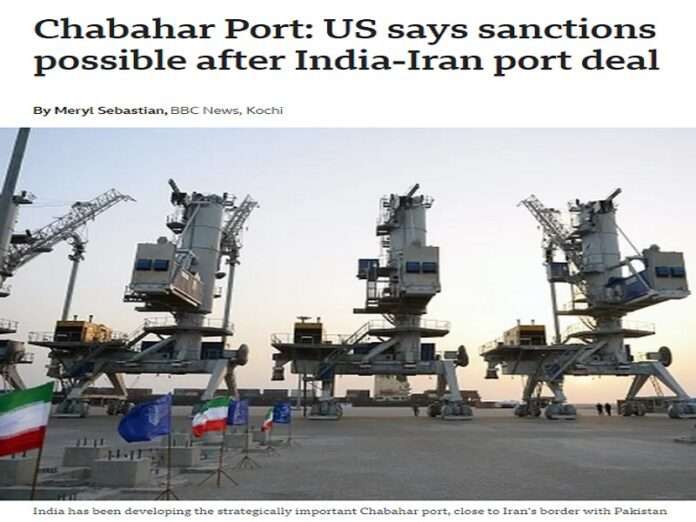State Department Deputy Spokesman Vedant Patel ominously declared on Monday that “U.S. sanctions on Iran remain in place and we’ll continue to enforce them” when asked about India clinching a deal with Iran to run the latter’s port of Chabahar for the next ten years. He added that “anyone considering business deals with Iran, they need to be aware of the potential risk that they are opening themselves up to and the potential risk of sanctions”, and he claimed that no sanctions exemptions have been granted.
That last statement is misleading, however, since the US has exempted India from sanctions for some of its Chabahar-related activities since 2019 per Al Jazeera’s report at the time citing the State Department’s statement on this subject. Specifically, India is allowed to use Chabahar for the purpose of facilitating trade with Afghanistan aimed at reconstruction and development, with fuel exports and humanitarian assistance being mentioned as examples of approved activity.
A lot has changed since then since the US no longer controls Afghanistan and its ties with India have become troubled after the US accused India in late November of masterminding an alleged assassination attempt against a Delhi-designated terrorist-separatist with dual American citizenship on US soil. The US is now meddling in India’s six-week-long elections in parallel with trying to patch up its infamously troubled ties with China, all of which is worsening India’s strategic threat perception of the US.
These three analyses here, here, and here can be referenced by interested readers who’d like to learn more about the abovementioned sequence of developments that’s beyond the scope of the present piece to explain in the detail required for bringing up to speed those who aren’t already aware. In brief, they all share the common denominator of the US creatively punishing India in “plausibly deniable” ways for refusing to dump Russia despite unprecedented pressure to do so since 2022, which enraged the US.
Even worse from an American perspective is how India revived the North-South Transport Corridor (NSTC) with Iran and Russia to become one Moscow’s top valves from Western sanctions pressure. Trade across this route is expected to scale up tremendously throughout the rest of this decade following India’s newly clinched deal with Iran for operating its terminal port of Chabahar. This will accelerate India’s rise as a globally significant Great Power in the ongoing systemic transition to multipolarity.
The US is against all of that since it wants to crush the Russian economy, continue isolating Iran, and subordinate India as a vassal. Furthermore, with the US exploring a “new normal” in its relations with China that could return the world to a form of Sino-US bi-multipolarity, there’s no longer any interest in having India serve as an independent counterweight to China in Central Asia via the NSTC since the US might soon want to redirect China’s focus to there from the South China Sea as part of a grand deal.
These factors combined to comprehensively recalibrate the US’ strategy towards India and resulted in its newly unfriendly form that most recently manifested itself through the ominous innuendo that sanctions might soon befall those companies that do business with Iran through Chabahar. Without a doubt, this development will further worsen already troubled Indo-US ties, especially since Prime Minister Narendra Modi is unlikely to capitulate to this pressure and might instead openly defy it to make a powerful point.








